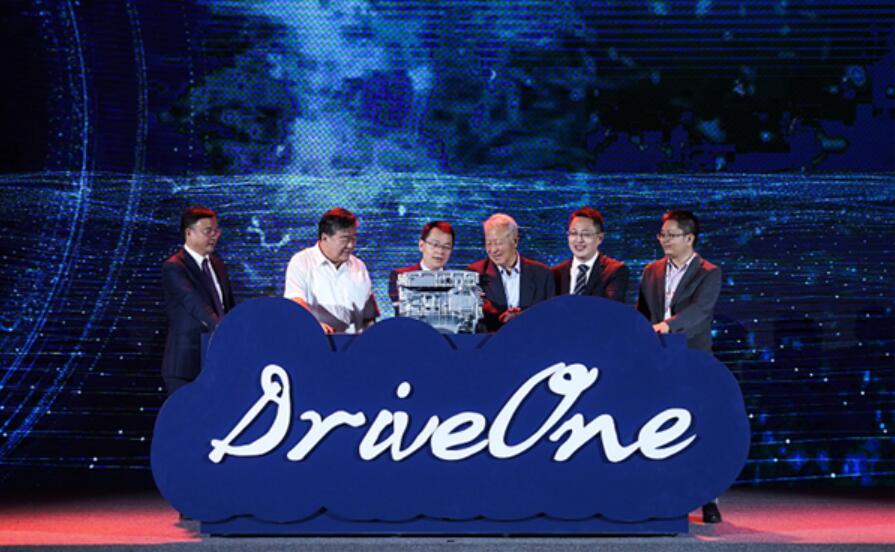Huawei is diversifying and its bearing fruit, the American don't understand the Chinese, sanction don't work, they will find a way out and become more productive.
from cnTechPost
Huawei unveils DriveONE, its first electric drive system
2020-11-12 20:52:51 GMT+8 | cnTechPost
1

Huawei has recently announced an all-in-one electric drive system called DriveONE, which is also the industry's first hyper-converged power domain solution.
DriveONE integrates seven components - MCU (micro control unit), motor, reducer, DCDC (DC converter), OBC (on-board charger), PDU (power distribution unit), and BCU (battery control unit) - to achieve deep integration of mechanical components and power components.
According to Huawei, the DriveONE system achieves simple development, simple adaptation, simple layout, and simple evolution.
Specifically, DriveONE can help the whole vehicle power domain minimalist arrangement, to achieve a Z-directional saving of 220mm, 2 fewer mounting brackets, 5m shorter wiring harness, 3 fewer connectors, and 2 fewer hose outlets and pipes.
Huawei said that through its self-developed AutoSar, the system achieves end-cloud collaborative development and significantly improves development efficiency.
As the industry's first high-voltage all-in-one electric drive system, the system can meet the 2C fast-charging experience and can achieve 200km range in 10 minutes of charging.
Compared to previous solutions, the system is more efficient (89% NEDC efficiency), more accurate (SOC detection accuracy ±3%), and consumes less energy, improving the range. It is also denser, with a power density of 2.1kw/kg.
In addition, the system has an excellent performance in extreme operating conditions (sustained high speed of 180km/h, 0-100km/h repeated acceleration 20 times), and low noise (NVH 78 dB) and low radiation (EMC CLASS 4).
The system adopts a centralized and flat OTA architecture, which simplifies the path and reduces the complexity of versioning while ensuring performance improvement, shortening the industry's common 10min upgrade time to 30s, and enabling one-key speedy upgrades in the future.
from cnTechPost
Huawei unveils DriveONE, its first electric drive system
2020-11-12 20:52:51 GMT+8 | cnTechPost
1

Huawei has recently announced an all-in-one electric drive system called DriveONE, which is also the industry's first hyper-converged power domain solution.
DriveONE integrates seven components - MCU (micro control unit), motor, reducer, DCDC (DC converter), OBC (on-board charger), PDU (power distribution unit), and BCU (battery control unit) - to achieve deep integration of mechanical components and power components.
According to Huawei, the DriveONE system achieves simple development, simple adaptation, simple layout, and simple evolution.
Specifically, DriveONE can help the whole vehicle power domain minimalist arrangement, to achieve a Z-directional saving of 220mm, 2 fewer mounting brackets, 5m shorter wiring harness, 3 fewer connectors, and 2 fewer hose outlets and pipes.
Huawei said that through its self-developed AutoSar, the system achieves end-cloud collaborative development and significantly improves development efficiency.
As the industry's first high-voltage all-in-one electric drive system, the system can meet the 2C fast-charging experience and can achieve 200km range in 10 minutes of charging.
Compared to previous solutions, the system is more efficient (89% NEDC efficiency), more accurate (SOC detection accuracy ±3%), and consumes less energy, improving the range. It is also denser, with a power density of 2.1kw/kg.
In addition, the system has an excellent performance in extreme operating conditions (sustained high speed of 180km/h, 0-100km/h repeated acceleration 20 times), and low noise (NVH 78 dB) and low radiation (EMC CLASS 4).
The system adopts a centralized and flat OTA architecture, which simplifies the path and reduces the complexity of versioning while ensuring performance improvement, shortening the industry's common 10min upgrade time to 30s, and enabling one-key speedy upgrades in the future.

